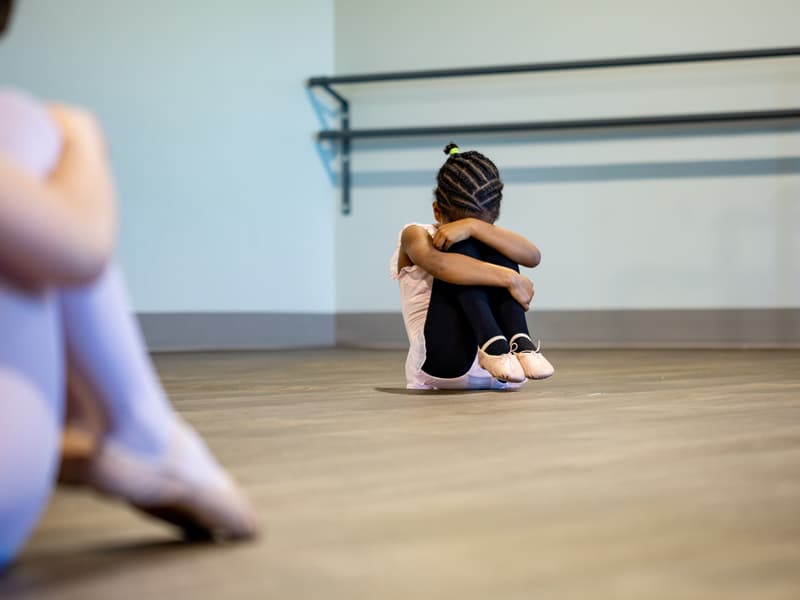There’s no denying that our kids are experiencing something of an ‘anxiety crisis’. Reports have found that anxiety is on the increase among kids of every age. That’s not surprising, given the uncertain times we are living in. More than ever, parents have been desperately seeking a strategy to help kids with anxiety.
Enter Dr Jodie Lowinger, clinical psychologist, founder of the Sydney Anxiety Clinic and author of The Mind Strength Method. Over the past ten years, Dr Lowinger has successfully treated hundreds of anxious kids and she’s founded a treatment plan that aims to help kids move forward through awareness and resilience.
“Anxiety is not something to be ashamed of, it’s not an inherent weakness,” Dr Lowinger says. “It truly, deeply is incredible strength. I say this built on years and years of experience… this is my own evidence-based experience of helping thousands of people at the coal face.”
Everyone can benefit: Mental health vs mental illness: creating a routine for mental wellbeing
This feels like such a refreshing, intriguing take on anxiety and it’s why Dr Lowinger wrote The Mind Strength Method. She knew her clinical strategy worked and she wanted more people to be able to leverage her program in an accessible, affordable way.
Why is anxiety on the increase?
“Anxiety is a natural physiological reaction to a perceived threat in our environment,” Dr Lowinger says. It’s the well-known ‘flight or fight’ response that would have served us well in caveman days when facing down a sabre-toothed tiger, but is triggered in modern days even when we simply experience anxious thoughts.

Dr Lowinger explains that the flight or fight response activates our sympathetic nervous system – ready to react to a life-threatening situation – but this shuts down our parasympathetic system. This is the system responsible for releasing feel-good hormones like oxytocin and melatonin. It’s the system that allows us to stay calm and rational.
So, when anxiety hits and we go fully into sympathetic nervous system mode, we’re not logical, we can’t sleep and we make very poor choices.
It’s not about ‘fixing’
If you have a child with anxiety (or you have anxiety yourself), this will sound very familiar. My son has battled anxiety all his life and in the early years we tried many strategies to help him learn to live with it. It’s been a hard slog for him and for us parents, too.
My journey with my son: What raising a kid with anxiety taught me about parenting
That’s a natural reaction, of course. When we see our kids ‘freaking out’ about what we perceive to be inconsequential things, it’s heartbreaking. We immediately want to ‘fix’ the problem.
“Parents want to protect, we want to fix,” explains Dr Lowinger. “Those are heart-driven actions. But it’s important to understand that it’s okay for your child to feel anxious. It’s okay to have these reactions.
“This is the heart and soul of the Mind Strength methodology. It’s saying that all feelings are okay, it’s not about being perfect. It’s about building a language around emotions and experiences.”

Step-by step to help kids with anxiety
Dr Lowinger’s Mind Strength Method breaks tackling anxiety down into four steps. I’ve read the book cover-to-cover and I can tell you that it’s a strategy with huge value. It reminds a kid that they are not their anxiety and helps them learn to focus on all the things they are.
Step 1: Emotional intel
Becoming aware of what makes us anxious and what we are thinking as a result of this trigger is step one of the Mind Strength Method. This can be as simple as taking a moment to pause, notice and engage in what’s happening around us, rather than automatically respond.
More than that, it’s about understanding why we become anxious and what it does to our body.
Being aware of how we are feeling and not rushing to override it or change it allows us to take the power out of our ‘flight or fight’ response. This is not about “fixing” what makes us anxious, but rather building acceptance.
Step 2: Awareness of your values
While we are building awareness of what anxiety looks like, it’s important to put some time into building our values foundations. These are the values that we want to have underpin our everyday life.
“A strong sense of what we value the most helps centre and calm us,” Dr Lowinger explains. “It helps us build resilience and pulls us towards being the kind of person we want to be.”
Dr Lowinger describes step one of the Mind Strength method as “pushing away from the flight or fight response” and step two as “pulling towards what really matters to us”. So, step two is all about developing strong foundations to provide strong structure to our everyday lives.
Step 3: The Mind Strength Toolkit
The third step in the Mind Strength method is all about practical ways to move from anxiety to resilience through your values. This includes tools to reduce the power of worry like the technique of naming your worries; strategies to boost mindfulness through a process called STOP (Stop, Take long slow out-breaths, Observe your surroundings, Proceed); improve observation skills; and learning to sit with uncertainty through honing acceptance skills.

As you can see from above, the Mind Strength toolkit is practical and adaptable. It’s a strategy to help kids with anxiety that gives them genuine techniques to practice and sharpen.
Step 4: A way forward
All of the skills learned above are put together in step four of the Mind Strength Method. Kids learn to hone their awareness, understand the values that drive them, stood up to anxious situations and finally, in step four they develop an action plan to move forward.
Don’t forget yourself, too: Happy people raise happy kids
This step helps them further understand the mind-body connection and work towards putting a wellbeing plan into place that will increase their positive mood state and help them learn to keep a grip on their flight/fight response. The wellbeing plan covers everything you would expect: sleep, eating well, staying hydrated, connecting with a wide circle, practising mindfulness and getting moving doing something you love.
It’s this “whole person” approach that I think underpins the value of the Dr Lowinger’s Mind Strength method. As a way to help kids with anxiety, it gives parents a practical guide and kids a useful toolset to move through anxiety to become the well-rounded, multi-faceted person they are meant to be.
The Mind Strength Method is available to buy here.
Feature image on Unsplash; Ballet by Solen Feyissa; denim jacket by Hailey Reed; Sunshine via unsplash

